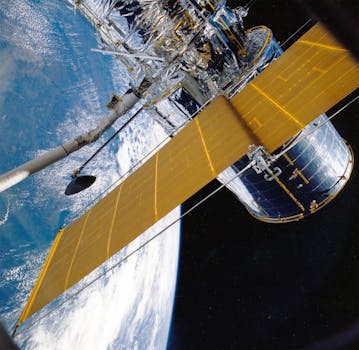
The Rise of Mega-Constellations: Latest Updates in Satellite Telecommunications
The Rise of Mega-Constellations: Latest Updates in Satellite Telecommunications is a rapidly growing field that is transforming the way we communicate. With the launch of thousands of small satellites into low Earth orbit, mega-constellations are poised to provide global internet connectivity, bridging the digital divide and enabling new opportunities for economic growth and development. In this article, we will explore the latest updates in satellite telecommunications, including the benefits and challenges of mega-constellations, and the key players in the industry.
What are Mega-Constellations?
Mega-constellations are large networks of small satellites that are launched into low Earth orbit to provide global internet connectivity. These satellites are designed to be small, lightweight, and inexpensive, making them ideal for large-scale deployments. Each satellite is equipped with advanced technology, including high-gain antennas, transceivers, and propulsion systems, allowing them to communicate with each other and with ground stations. The satellites are typically launched into a low Earth orbit, at an altitude of around 500-1,200 km, where they can provide high-speed internet connectivity to users on the ground.
Benefits of Mega-Constellations
The benefits of mega-constellations are numerous. They have the potential to provide global internet connectivity, bridging the digital divide and enabling new opportunities for economic growth and development. Mega-constellations can also provide backup connectivity during natural disasters or network outages, ensuring that critical communications are maintained. Additionally, they can enable new applications, such as IoT, smart cities, and precision agriculture, by providing low-latency, high-speed connectivity. Furthermore, mega-constellations can also provide remote sensing capabilities, enabling the monitoring of environmental changes, tracking of weather patterns, and detection of natural disasters.
Challenges of Mega-Constellations
Despite the benefits of mega-constellations, there are also several challenges that need to be addressed. One of the main challenges is the risk of collisions between satellites, which can generate a large amount of debris in Earth’s orbit. This debris can pose a significant threat to the operation of other satellites and spacecraft. Another challenge is the issue of spectrum allocation, as the large number of satellites in mega-constellations can interfere with other satellite systems and ground-based communications. Additionally, there are concerns about the environmental impact of launching thousands of satellites into space, including the potential for increased space debris and the effects on the Earth’s atmosphere.
Key Players in the Industry
There are several key players in the satellite telecommunications industry, including SpaceX, OneWeb, Amazon Kuiper Systems, and Telesat. These companies are investing heavily in the development of mega-constellations, with SpaceX’s Starlink and OneWeb’s constellation being two of the most advanced systems currently in development. Other companies, such as Google and Facebook, are also exploring the use of satellite technology to provide internet connectivity to underserved communities.



